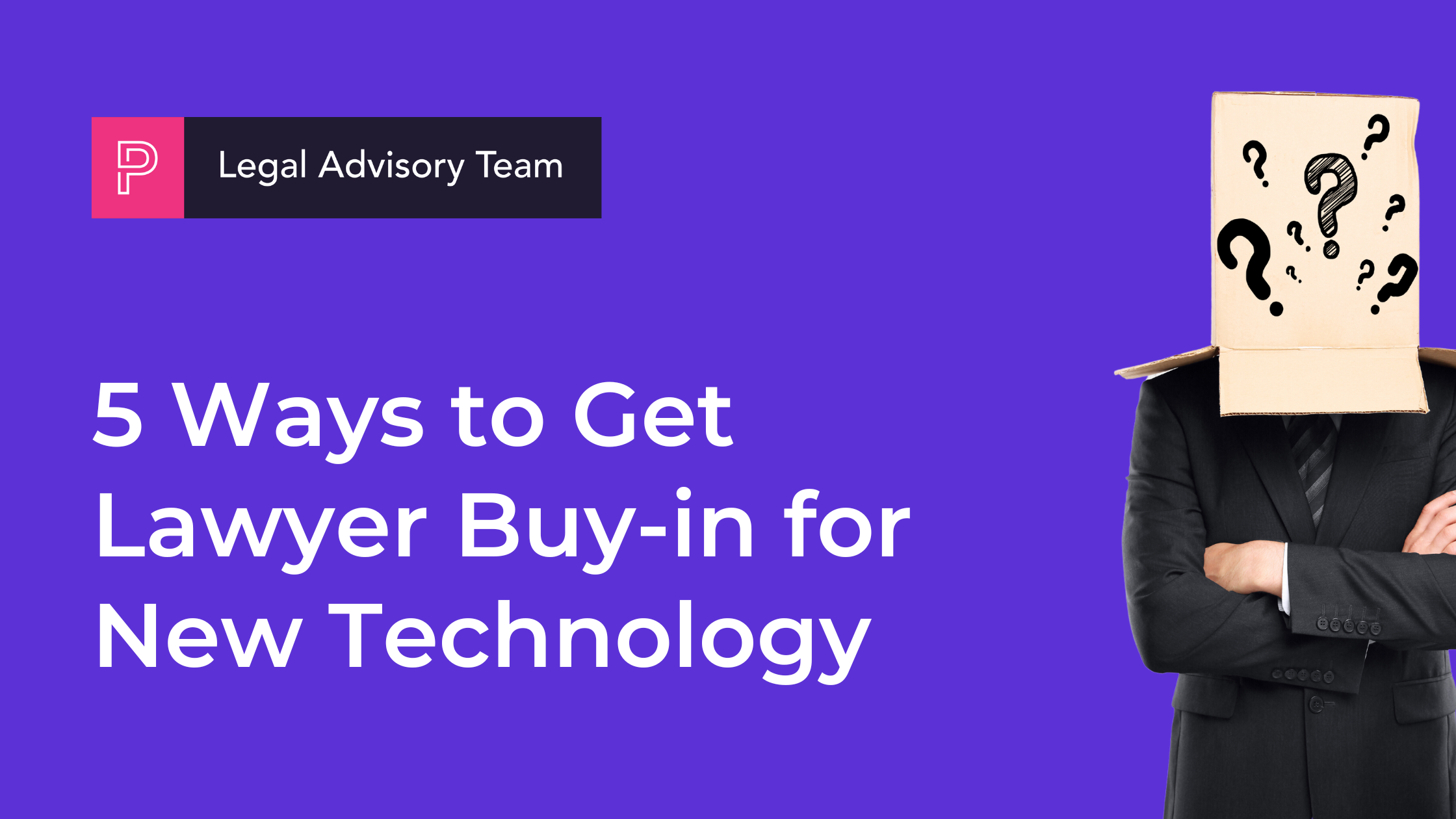
"The technology is great; but will our lawyers actually use it?"
Persuading in-house lawyers to embrace and effectively utilize new technology can be…well, a significant challenge.
At PERSUIT, we know this truth all too well. Because getting in-house lawyers to embrace new technology — like PERSUIT — is often the difference between implementation success and failure.
And our success here is what often sets us apart from past tried-and-failed legal technology solutions for our clients.
At PERSUIT, we have successfully designed and executed the training and communications programs for deployment of PERSUIT at over 60 Fortune 500 companies. Along the way, we’ve had the opportunity to learn from our failures, as well as some of the most experienced transformational change teams in legal operations.
Here’s the thinking that goes into our “secret sauce” around technology adoption.
Lead With the Head and Heart
In any technology change initiative, you have to capture the head and the heart of the user before the fingers will follow.
If your lawyers are not taking action, it means you haven't really grabbed their attention, engaged their intellect, and fired up the right emotions to inspire them to delve into the new technology unknown.
We don’t usually change what we can’t see or at least visualize. It is entirely expected for many of them to exhibit initial skepticism, a natural response to the introduction of any change in the legal landscape.
The decision to use any technology comes down to highlighting the benefits in a way that resonates, addressing any concerns users might have, and allowing them to imagine their future using the technology — all while mitigating the apprehension associated with venturing into uncharted technological territory for them.
For example, when onboarding in-house teams to the PERSUIT platform, we know that some of the most common objections and concerns on in-house lawyers’ minds are:
- Will this new process take a lot of time?
- This might be great for “X” but I don’t really see how it’s applicable to what my own department does.
- Isn’t this process of competing out matters just going to lead to a “race to the bottom?”
- The way I work now — well, works! How much of my daily work has to change if I use this new technology?
Technology adoption takes reassurance above the message: “It’s our new corporate strategy,” to capture hearts and minds. It needs to assure them that it will eventually make their working professional lives better, easier, or smoother in ways that are not possible for them now.
Our Approach to Pitching New Technology to Lawyers
Our approach to technology change management is based on the widely known ADKAR method — Awareness, Desire, Knowledge, Ability, and Reinforcement.
This approach is best customized to each legal department's goals and objectives. But when we get the opportunity to socialize PERSUIT with a practice group, potential early adopter, or stakeholder, there are a few ways we ensure this time is well spent.
1. Define clear learning objectives
Before conducting any demo or training session, it is important to define clear objectives. Ask yourself: "If there’s one thing the user remembers from this demo what does it need to be?"
This will help to ensure that the way you deliver the session is focused and that participants are aware of what they are expected to learn. Make sure to align the focus with the participant’s goals and with insight into their team’s culture.
2. Use real-life scenarios
Using real-life scenarios during demos and training sessions helps to make the session more engaging and relatable. Participants can relate to the scenarios and are more likely to retain the information. They need to see themselves in this described future state.
For example, when onboarding new PERSUIT users with various client teams, we do our best to use an example matter that’s relevant to the particular practice area to which we are presenting. This also directly deals with the above-mentioned objection around being "great for ‘X’ but not sure how it is applicable to me."
3. Make it sticky by giving hands-on experience
Providing hands-on experience during training sessions is an effective way to ensure that participants understand the material and it sticks in time. This can include interactive exercises or simulations.
For example, instead of telling participants about a particular feature, like our AI-powered proposal analyzer, the PERSUIT team will show them on the platform and walk them through the scenario to show how easy it is to use there and then.
4. Keep it simple
Avoid using jargon or technical terms that may confuse participants. The undefined acronym is an enemy to adult learning. Use simple language and provide clear explanations.
Our client base deals with some of the most complex legal issues in the world. They don’t need any more headaches when using technology which has been designed to make their lives easier.
5. Anticipate questions and common objections
At PERSUIT, we know there are a range of common objections and our demo will specifically be set up to address these, even if we are not directly asked them by the user group. It’s important to use your experience to anticipate what the audience is thinking.
It's equally important to ensure you have easy-to-find answers to common questions and objections after the training. They don’t know what they don’t know until they put their hands on the tool and work through scenarios. Make it easy to ask questions and get immediate answers.
By following these best practices, you can ensure that your demo and training sessions are effective and beneficial for your employees.
Learn how PERSUIT helps in-house teams tackle their change-management challenges here.